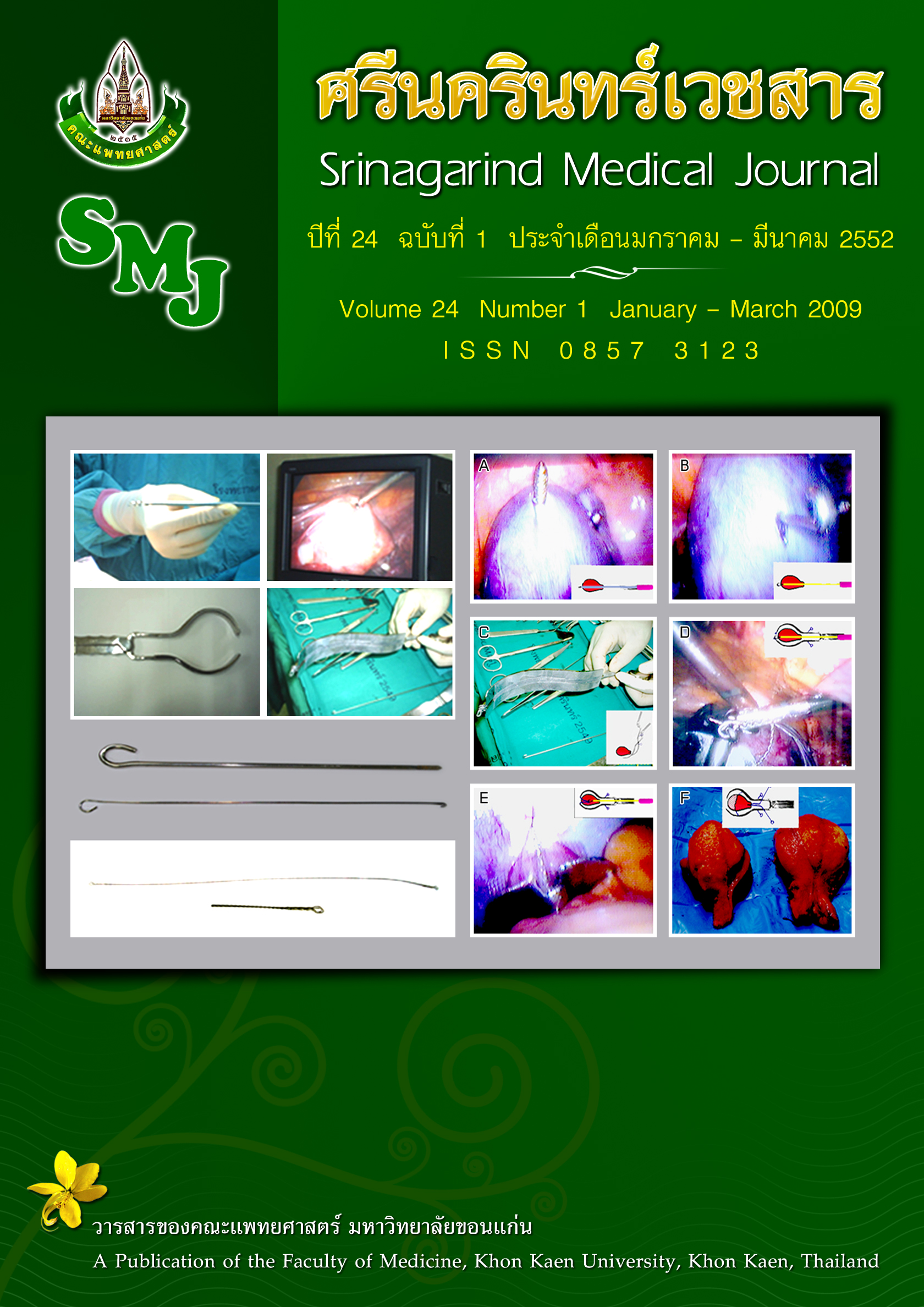Study of Weight Excess of Year 1–4 Students’ School Bag at Khon Kaen University Primary Demonstration School
Abstract
Background: In Thailand from the past until now we saw that Thai students usually carry huge bags to school exceeding the recommended bag weight of less than 10% of body weight. This overloading adversely affects health of students. The issue has become of public interest for a while, but no follow-up studies have been done. Therefore, we are motivated to conduct such a research in Khon Kaen.
Objectives: To study 1) proportion of students with bag weight exceeding the recommended weight at the Khon Kaen University primary demonstration school 2) the factors related to the excessive bag weight.
Study design: A descriptive study was conducted.
Setting: The Demonstration school, Khon Kaen University.
Study population and sample: The samples of 212 students were randomly selected from 635 study population.
Tools: A calibrated digital weighing scale, an interviewed questionnaire and direct observation were applied to collect the data.
Data analysis: SPSS-PC version 15 was used to analyze the frequencies, percentage, mean (SD), median (IQR) and 95% Confidence Interval Student T – test, Mann-Whitney U test, Pearson Chi – square and Multiple logistic regression were also used to analyze the association between the excessive school bag weight and some interesting factors.
Results: The response rate was 99.1% (210/212). showed that 81% (95%CI: 75.4, 86.3) of the students carried school bags that weighted ≥ 10 % of their body weights. In addition, 16.2% (95%CI: 11.6, 22.0) of the students carried school bags that weighted at least 20 % of their body weights. The variables that were statistically significantly related to the excessive bag weights were female and wheeled bag (adj.ORs were 2.6 and 14.2 respectively). Musculoskeletal symptoms were reported by 30% (95%CI: 24.0, 36.6) of the students. No factor had statistically significant (p-value< 0.05) association with the pain. Concerning bag types, 58.1% used wheeled bag. The most common reason for using wheeled bag was concerns about the bag weight (61.5%), a gift from parents (49.2%), carrying capacity of wheeled bag (23.8%) and fashioned life style (15.6%).
Conclusion: The problem of overloaded school bags is still existed. Eighty one per cent of the students carried school bags that weighted exceeding the recommended weight. Girls tended to carry heavier bag than boys. Wheeled bags were associated with the excessive weight. Safety and long term health effects of using heavy school bags should be studied in the future.
Keywords: school bag, weight excess




